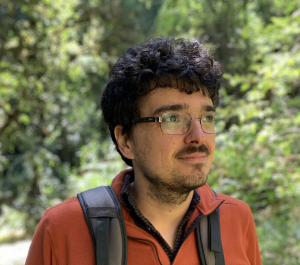Gabriel Landi
University of São Paulo
ZOOM LINK TO JOIN IN: http://s.ic.fo/QTD_GabrielLandi
Tuesday Oct 20, 2020 / 14:00-15:00 CEST
Thermodynamics of continuously measured quantum systems
Irreversibility is intimately related to ignorance. The more one knows about a physical process, the more reversible it is. The 2nd law of hermodynamics should therefore also take into account the amount of information acquired by the experimenter. In the quantum domain, however, this discussion becomes more delicate since measurements are inevitably invasive. In this talk I discuss recent results on the description of the 2nd law for continuously monitored bosonic systems [1]. Our approach is based on the use of quantum phase space techniques to characterize the thermodynamics, as first put forth in [2, 3]. Combining this with the framework of weak continuous measurements and stochastic master equations, we show that it is possible to construct a conditional 2nd law, given the measurement records. Moreover, we show that the diference between the conditional and unconditional 2nd laws is directly associated with the integrated information gained from the measurement records. Finally, I discuss a recent experimental assessment of this principle in an optomechanical system [4], where conditional and unconditional thermodynamic quantities were obtained at the single-trajectory level. Particularly interesting, we discuss the notion of an informational steady-state, where the act of continuously acquiring information keeps the system away from equilibrium, in a non-equilibrium steady-state.
gtlandi@if.usp.br
[1] A. Belenchia, L. Mancino, G. T. Landi, and M. Paternostro, accepted in Nature Quantum Information (2019), arXiv:1908.09382.
[2] J. P. Santos, G. T. Landi, and M. Paternostro, Physical Review Letters 118, 220601 (2017), ArXiv:1706.01145.
[3] M. Brunelli, L. Fusco, R. Landig, W. Wieczorek, J. Hoelscher- Obermaier, G. Landi, F. L. Semi˜ao, A. Ferraro, N. Kiesel, T. Donner, G. De Chiara, and M. Paternostro, Physical Review Letters 121, 160604 (2018), arXiv:1602.06958.
[4] M. Rossi, L. Mancino, G. T. Landi, M. Paternostro, A. Schliesser, and A. Belenchia, Physical Review Letters 125, 080601 (2020), arXiv:2005.03429.


Hi, Gabriel.
I have just seen your talk about the entropy production in continuously measured system. Thank you for the presentation, it was doubtlessly a very interesting one.
I have a (maybe naive) question of why you have chosen the Wigner function to evaluate your entropy and not the usual way I see in textbooks, for example. Recent works from Feynman path integral approach have used this approach, and the reason for this is that it becomes fairly complicated to write the logarithm of a density operator in coordinates representation, however it may have skipped my attention what reason should be the case for your work.
Another question is, by continuously measuring the system with a feedback control it seems to avoid the system to thermalize, what I imagine is what would happen if you let it thermalize after a certain amount of measurements. My question is what would happen to the Crooks relation for example. (I’m not entirely sure if that makes sense, if so, I’d be pleased to know).
Hi Ricardo,
Thanks for the question and sorry for the late reply. We use the Wigner entropy because using the standard von Neumann one leads to diverging results when the bath is at zero temperature (as is the case in the quantum optical examples I discussed). This is, as far as I understand, a kind of “bug” of the standard formulation. Using the Wigner entropy yields a semiclassical approximation, which is expected to match the von Neumann formulation at high temperatures. But it yields something finite at $T=0$.
As for the question on the Crooks relation, I’m not sure I understand. I mean, the Crooks relation is associated to a work protocol right? So you mean, what would happen if we were to repeat the work protocol in the presence of measurements? That is a good question. This seem to be related to the works of Sagawa and Ueda (PRL 2012, I think). But that is probably only in the case of classical systems.
Gabriel,
Thank you for your reply. It did not know this aspect of von Neuman entropy.
As for the other question, I think your answer made it clearer. My intuition tells me that you may obtain results for your entropy production, in detailed fluctuation relation, that accounts for the information exchanged between the system and the measurement apparatus as well. Similarly, as in the work of Sagawa and Ueda. But again, it is just intuition. I’m not deeply familiar with their work. Thank you again.
Hi Gabriel, thanks for the very nice talk. I have a couple of questions: The first one is about the difference between doing measurements on the bath, as you do, and measuring the system. Is there some advantage or some particular effect that distinguishes the dynamics with measurements on the bath? Because there also these formulations of the second law related to the Maxwell demon, where as far as I know in the usual approach (at least in FTs with feedback) it is the system what is measured. The second one is about how relevant is feedback for your approach (i.e. applying different evolutions conditioned on the measurements). If I understood correctly this is not a key aspect for your results.
Hi Ivan,
How are you? Sorry about the late reply!
Addressing your questions:
– Measuring the bath ensures that there is never any backaction on the system, at the ensemble level. That is, we can never directly affect the state of the system. A measurement on the system is active, in the sense that it directly influences the dynamics. But if we measure the bath and we do it only _after_ it interacted with the system, then this will never influence the system.
– As for feedback, it is not particularly important for the main ideas. Most papers (specially by Sagawa & Ueda, etc.) include feedback, but that makes everything much more complicated. Here we have decided to take feedback out of the question, to focus on the entropy production.
Thanks Gabriel! So I guess that the modification of the usual second law comes from changing the dynamics of the bath through the measurements, it is the only possible way I see. Maybe you mentioned it but I missed that point. Anyway, thanks for the answer and perhaps we can further discuss later.